John Deere 1000, 1700, 4000 Series Long and Short Drop Powershift Transmission Component Technical Manual (CTM202 & 4005057)
$27.00
Manual Included:
- Component Technical Manual: 146 Pages & 56 Pages
Specifications:
- Brand: John Deere
- Model: 1000, 1700, 4000 Series
- Type: Powershift Transmission (PST)
- Manuals: Component Technical Manual
- Publication Numbers: CTM202 and 4005057
- Language: English
- Format: PDF
- Description
- Reviews (0)
Description
Table of Content (Component Technical Manual CTM202)
Powershift Transmissions
Group 05—Safety
Group 10—General Information
Group 15—1000 And 1700 Series Transmission
Group 20—4000 Series Transmission
The 4000, 1700 and 1000 series powershift transmissions all operate on the same principle, the difference being the horsepower rating. However, the 4000 series, having a different pump and valve body, has different pressure ranges that are described in a separate section.
The 1000, and 1700 series are forward and reverse transmissions, with the option of 3, 4 or 6 speeds in either direction. Forward motion, reverse motion, and the speeds are obtained through the use of hydraulically actuated multiple disc clutches. These clutches are power absorbing members that can be engaged at full engine power. Shifting under full engine power makes these models a full power shift for the forward and reverse motion in all speeds.
The clutches in these units are hydraulically applied and spring released. Because the clutches are hydraulically controlled, there is automatic compensation for normal wear, which eliminates the need for adjustment. Each clutch has paper graphitic friction plates and polished steel reaction plates.
The power from the engine is transmitted to the transmission through a torque converter. The use of the torque converter has two distinct advantages; (1) The converter is essentially a fluid drive, there being no direct mechanical connection through it. This feature creates a very smooth and shock-free drive eliminating engine stalling and lugging. (2) The converter multiplies torque during heavy pull-down loads. When loads are light, the converter transmits the engine power directly at almost engine speeds, and there is no torque multiplication. The net result is an action like a transmission, with infinitely variable and automatic speed ratios. The need for shifting gears, although present, is greatly reduce
Table of Content (Component Technical Manual 4005057 – Covering 1000 Series only)
Parts Ordering Instructions
Description
Service and Oil Recommendations
Bolt Torque Specifications
Trouble Shooting
Control Valve, Function and Pressure Check
Converter Installation, Remote Filter and
Heat Exchanger Data
Clutch and Stage Locations
Oil Flow Circuit 9 5/8 Drop
Oil Flow Circuit 18 5/8 Drop
Special Tools
Converter, 11 3A
Converter, 12 3/4
Control Valve, 3-Speed
Control Valve, 4-Speed
Control Valve with Feathering In Lo Gear
Brake Cutoff Valve
Primary Pump With Transmission Mounted Oil Filter
Primary Pump With Auxiliary Drive
Front Cover Assembly
Clutch Stack Assembly
Main Case, 9 5/8 Drop
Brake, Drum Type
Main Case, 18 5/8 Drop
Hi-Lo Range Shift
Output Bearing Retainer Shim Adjustment
Converter, Midship Mounted
The Series 1000 Shift-O-Matic Drive is a forward and reverse transmission, with the option of 2, 3, 4 or 6 speedy in either direction. Forward motion, reverse motion, and the four speeds are obtained through the use of hydraulically actuated multiple disc clutches. These clutches are power absorbing members that can be engaged at full engine power. Shifting under full engine power makes this model a full power shift for the forward and reverse motion in all four speeds.
The clutches in this unit are hydraulically applied and spring released. Because the clutches are hydraulically controlled, there is automatic compensation for normal wear, which eliminates the need for adjustment. Each clutch uses eleven semi metallic friction plates, and eleven polished steel reaction plates, except for the high gear clutch that uses eight of each plate.
The power from the engine is transmitted to the Shift-O-Matic^ through a torque converter. The use of the torque converter has two distinct advantages, one is the converter is essentially a fluid drive, there being no direct mechanical connection through it. This feature creates a very smooth and shock free drive eliminating engine stalling and lugging. A second advantage is that the converter multiplies torque during heavy pull-down loads. When loads are light the converter transmits the engine power directly at almost engine speed, and there is no torque multiplication. The net result is an action like a transmission, with infinitely variable and automatic speed ratios. The need for shifting gears, although present, is greatly reduced.
Be the first to review “John Deere 1000, 1700, 4000 Series Long and Short Drop Powershift Transmission Component Technical Manual (CTM202 & 4005057)”
You must be logged in to post a review.


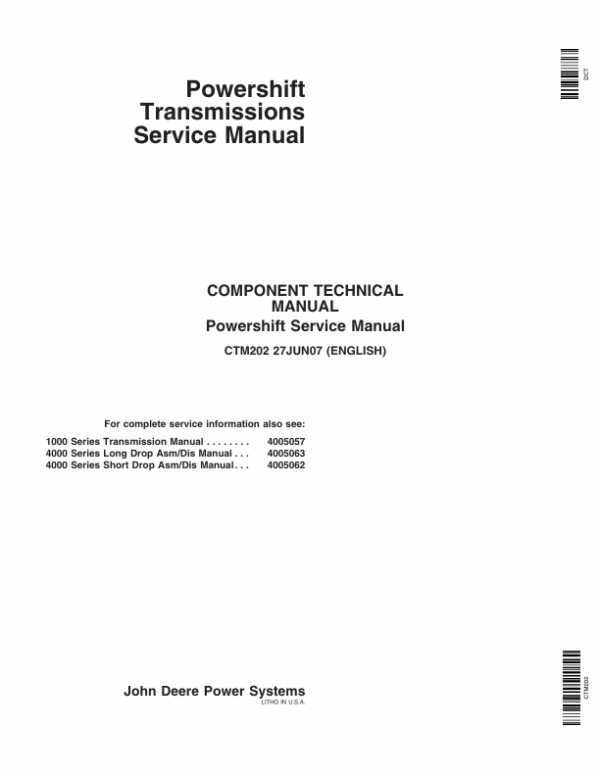
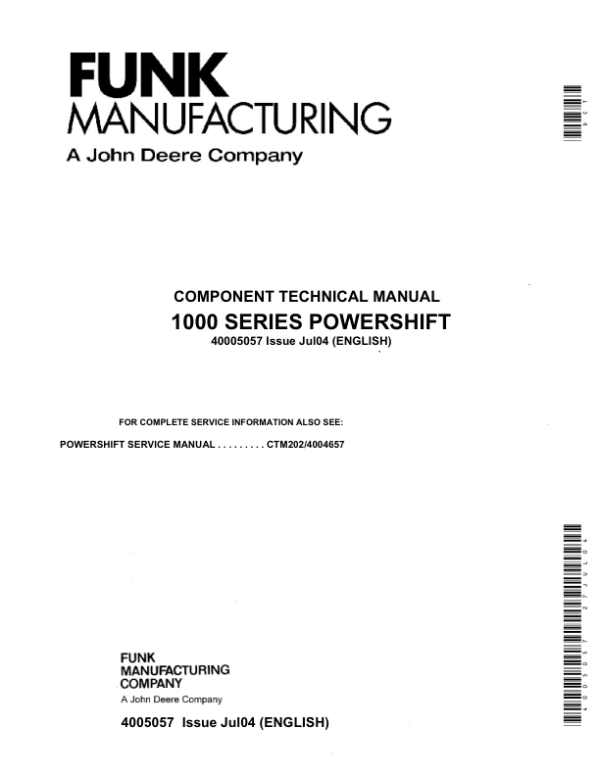
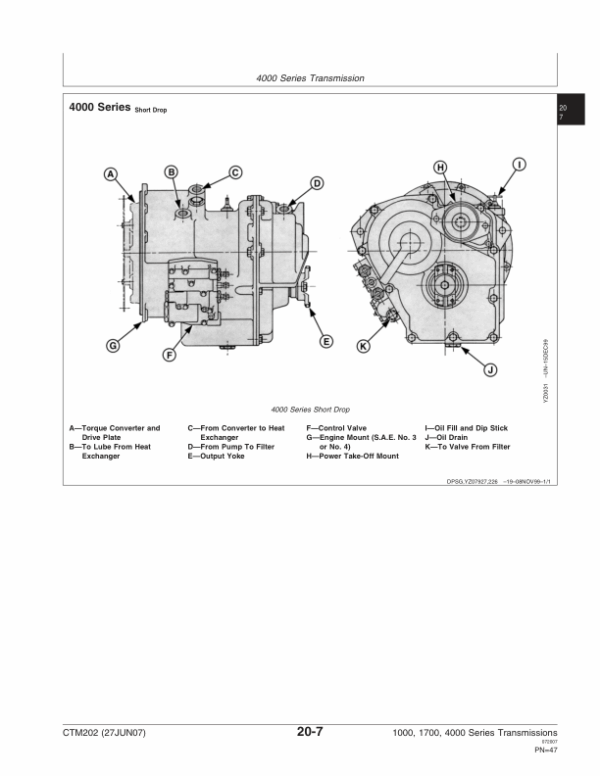
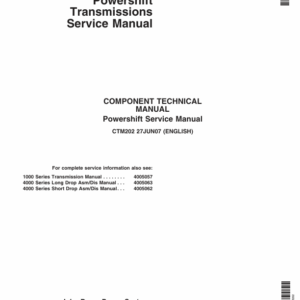
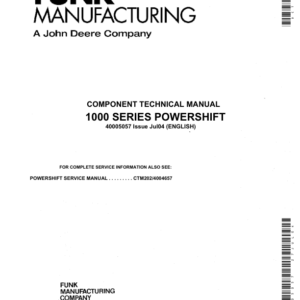
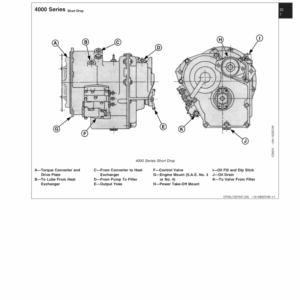
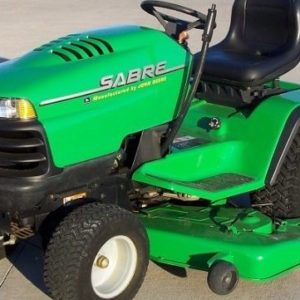
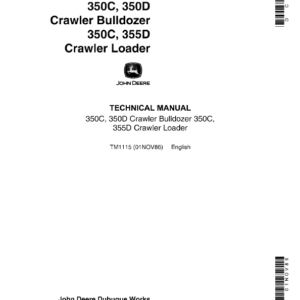
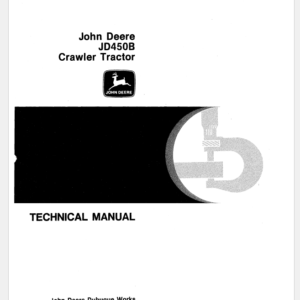
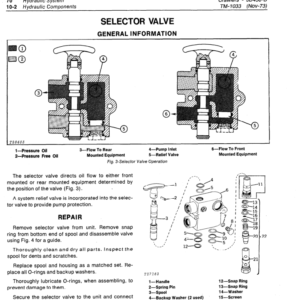
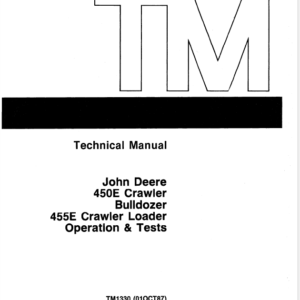
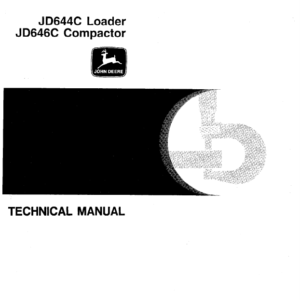
Reviews
There are no reviews yet.